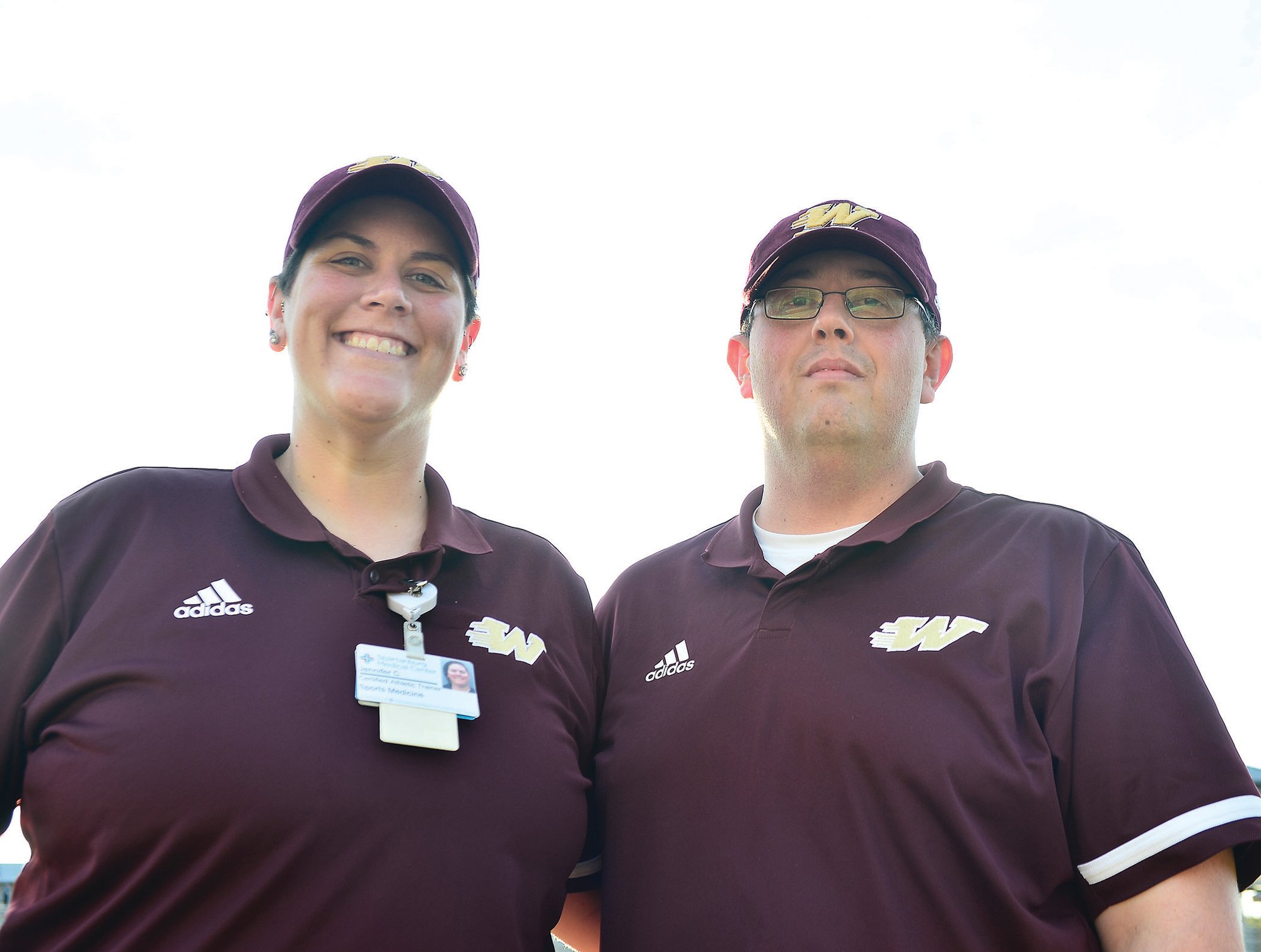Team effort helps Woodruff athletic trainers save a life
Spartanburg Herald-Journal
WOODRUFF - When Jennifer Chesson raced into the stands at Varner Stadium on Sept. 13, she didn't know what she'd find.
Chesson, one of Woodruff's athletic trainers, heard people screaming for help and took off. She found a man experiencing a cardiac episode and people attending to him. Chesson's training took over, and as she worked she realized she needed the school's automated external defibrillator. She turned to call for it.
Jason Currin put it in her hands.
Currin, the other trainer for the Wolverines, can't say why he even picked up the AED. While walking a banged-up player to the locker room, he also heard the commotion that drew Chesson into the stands. He took off at a sprint, and as he passed the Wolverines' training table near midfield on the home sideline he snatched the device on his way by.
"As I was running past our table something told me to grab the AED, because you never know," he said. "You always have to consider that you don't know what you're going to find. So I grabbed it, and as she was yelling for it I was handing it to her."
Quick action from the trainers, fans in the stands, and the Woodruff paramedics onsite helped to stabilize Neil Heller. The longtime pastor of Calvary Baptist Church in Lyman, Heller was attending the Wolverines' game against Seneca with his son-in-law, Chris Taylor. It's something that has become a tradition for the two in the past several years, following health concerns brought on by a stroke suffered by Heller and his subsequent recovery.
"We would always find the closest seat available on the home side," Taylor said. "This had become increasingly important over the last couple years as his mobility had become limited. With that in mind, if the game became one-sided by late in the third quarter or early in the fourth, we left early to avoid the difficulty of navigating the crowd at the end of the game."
They were almost gone. Woodruff led 35-10, but Seneca scored 15 unanswered, cutting the lead to 10, and the two elected to stay. With Woodruff driving for a late, game-clinching score, Taylor turned to Heller to tell him that if the home team scored, they would likely need to head for the exit. He found his father-in-law slumped forward and not moving.
"As I leaned him back, I saw that his eyes were fixed wide open, his face had lost all color, he had stopped breathing, and he had no heartbeat," Taylor said. "He was gone."
While fans trained in CPR began to work, others called for help, bringing Chesson into the stands.
"When we got there, someone had started chest compressions, which was great," she said. "I was able to get his shirt open and prep him for the AED, and when I asked for it, Jason was right behind me with it. We did have to shock him one time. We continued CPR as the paramedics came to help, and we got him hooked up to their EKG machine, and we were able to get him stabilized enough to send him to Spartanburg Regional."
The whole episode took about eight minutes, Currin said. It was plenty of time to realize how critical seconds can be in an emergency.
"It probably went as smoothly as you could ask for in a situation like that," he said. "You can't ever plan for that sort of thing. We had quite a bit of help, and a lot of people coming together to help us out and to help him out."
Heller was rushed to Spartanburg Regional, and his initial prognosis was bleak. But after two-and-a-half weeks in the hospital and a week and a half of rehabilitation, he is home and doing well.
"It's nothing short of a miracle," Taylor said. "We are overjoyed that God has blessed us with more quality time with him."
Taylor expressed gratitude to Woodruff's trainers, the fans surrounding Heller in the stands, the paramedics and everyone involved in helping Heller.
"God has truly used each one of you in a special way to share in the fact that Neil Heller is still alive, well, and improving daily."
For Currin and Chesson, the night was something they've long trained for and never expected. The pair have worked together for five years, studied in the same undergraduate program and even had some of the same professors. Both said that training, and their professional relationship, helped avert a tragedy.
"If one of us isn't one hundred percent strong in some area, the other is right there to fill in," Chesson said. "It's nice to work with somebody who understands that."
Currin put it even more simply than that.
"We both just somehow know what the other needs," he said.
More Articles to Read

